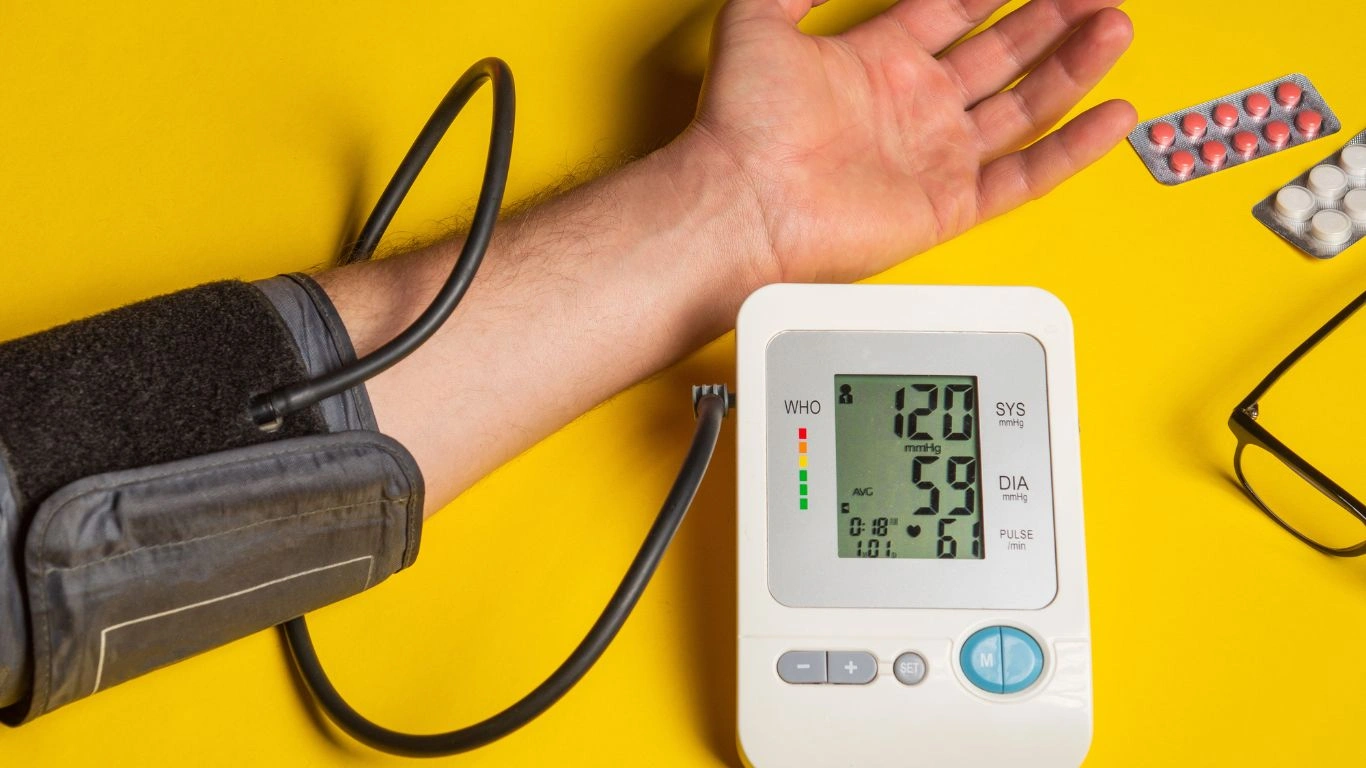How to Balance Sodium and Potassium Intake for Better Health
As a hypertension expert, I’ve seen firsthand how vital it is to understand the impact of sodium and potassium on blood pressure management. These two minerals are key players in the delicate balance that keeps our heart and blood vessels functioning smoothly. If you’re someone who has been diagnosed with high blood pressure or simply looking to optimize your heart health, you’ve probably heard a lot about how to balance sodium and potassium intake. But let me tell you, it’s not just about cutting back on salt and increasing potassium. There’s more to it than that, and understanding the science behind it is crucial for achieving the best results.
The Role of Sodium and Potassium in Blood Pressure

Sodium and potassium work together in a process called electrolyte balance, which helps regulate important functions like fluid retention, muscle contractions, and nerve impulses. In a healthy person, these two minerals are kept in check by the kidneys, ensuring that neither one becomes too dominant. However, if you’re consuming too much sodium or not enough potassium, your blood pressure can suffer. This is where understanding the balance becomes essential.
How Sodium Affects Your Blood Pressure
Sodium is a mineral that plays a big role in maintaining the balance of fluids in your body. It attracts water, and when you consume too much of it, your body holds onto excess fluid. This increased fluid volume puts extra pressure on your blood vessels, leading to higher blood pressure. Over time, this can strain your heart, kidneys, and other organs, increasing the risk of heart disease, stroke, and kidney damage.
Unfortunately, most people consume way more sodium than the recommended daily limit. According to the American Heart Association, the average adult consumes about 3,400 milligrams of sodium a day—way above the 2,300 milligrams that experts suggest. And if you’re one of those people who frequently eat processed foods or fast food, you might be getting even more than that.
Potassium: The Mineral that Counteracts Sodium
On the flip side, potassium has a very different effect on the body. This mineral helps counteract the effects of sodium by helping the kidneys remove excess sodium through urine. Potassium also relaxes the walls of your blood vessels, which can help lower blood pressure. So, if you’re looking to balance your sodium intake, you’ll want to make sure you’re getting enough potassium.
Interestingly, many of us don’t get enough potassium. While the recommended daily intake for potassium is around 4,700 milligrams, studies show that most people only consume about half of that amount. This imbalance can make it harder for your body to regulate blood pressure, especially if you’re consuming high amounts of sodium.
Why Balancing Sodium and Potassium Matters for Your Heart

The heart and circulatory system are like a delicate ecosystem, and maintaining the right balance of sodium and potassium is crucial for its smooth operation. When the ratio of sodium to potassium is off, the heart must work harder to pump blood throughout the body. This can increase your risk for hypertension (high blood pressure), heart disease, and even stroke.
The Impact of an Imbalanced Diet
Imagine a scenario where you’re consuming large amounts of processed food high in sodium, but not enough potassium-rich fruits and vegetables. This creates a vicious cycle where the sodium keeps raising your blood pressure, and the lack of potassium leaves your kidneys unable to properly flush out the excess sodium. In the long run, this leads to chronic hypertension, which can have serious consequences on your health.
How to Get More Potassium in Your Diet
One of the easiest ways to start balancing your sodium intake is by eating more potassium-rich foods. Potassium is abundant in a variety of whole, natural foods like:
- Bananas – One medium banana provides about 400 milligrams of potassium.
- Sweet potatoes – A medium sweet potato contains about 540 milligrams of potassium.
- Spinach – A cup of cooked spinach has about 800 milligrams of potassium.
- Avocados – Half of an avocado provides roughly 500 milligrams of potassium.
- Tomatoes – A medium tomato gives you around 300 milligrams of potassium.
- Beans and legumes – Black beans, kidney beans, and lentils are great sources, with a cup of cooked beans providing 600-700 milligrams of potassium.
Understanding the Best Sodium Sources and How to Cut Back

While potassium-rich foods are easy to add to your diet, sodium can be a bit trickier to manage. Sodium is naturally found in some foods, but it’s mostly added during processing, which is why many of us unknowingly consume too much of it. The top sources of sodium in the typical diet include:
- Processed foods (like canned soups, frozen meals, and deli meats)
- Restaurant and fast food (often loaded with salt for flavor)
- Packaged snacks (like chips, pretzels, and crackers)
- Condiments (soy sauce, ketchup, and salad dressings)
So, what can you do? Start by reducing your consumption of processed and fast food. Opt for fresh or frozen vegetables instead of canned varieties, and choose low-sodium versions of your favorite snacks and condiments. Cooking at home also gives you control over how much salt is added to your meals, helping you keep your sodium levels in check.
Making Small Changes to Your Sodium and Potassium Intake

It doesn’t have to be a huge overhaul of your entire lifestyle to make a noticeable difference in your blood pressure. The key is making small, manageable changes that fit seamlessly into your daily routine. If you’re looking to balance your sodium and potassium intake effectively, try focusing on the foods you already eat and make gradual shifts in your diet.
For example, I remember when I first started advising my patients on how to reduce their sodium intake, many of them were overwhelmed by the idea of completely giving up their favorite salty snacks. But, over time, we learned that small substitutions could have a big impact without sacrificing taste. Let me walk you through some realistic tips and strategies that can help you balance these minerals without feeling deprived.
Start with Simple Substitutions
One of the easiest ways to start is by swapping out high-sodium foods with potassium-rich options. It’s all about finding those little victories throughout your day. You don’t need to make everything from scratch—there are plenty of products available that cater to those looking to lower their sodium intake. For example, consider switching from regular canned soup to low-sodium versions, or replacing your afternoon potato chips with a handful of almonds, which are also a great source of potassium.
Another simple substitution is swapping out salted nuts for unsalted ones. You might be surprised at how easy it is to adjust your palate over time. I’ve seen countless patients who initially thought they couldn’t live without their salty snacks, but after just a couple of weeks, they didn’t miss them at all. Plus, you’ll get the added benefit of lower sodium and more potassium in your diet.
Read Labels and Choose Wisely
When I talk to people about how to balance sodium and potassium intake, one of the first pieces of advice I give them is to start reading food labels more closely. It’s not always easy to make informed decisions when shopping, but paying attention to sodium levels is a great way to get started.
For instance, when you look at the nutritional labels, you’ll often see “% Daily Value” for sodium. Aim for foods that are low-sodium (less than 140 milligrams per serving) or no-sodium options. Most packaged foods can be surprisingly high in sodium, so being mindful of how much you’re consuming is an important step toward managing your blood pressure.
The Importance of Potassium-Rich Snacks

If you’ve ever felt confused about how to incorporate more potassium into your diet, I get it—this mineral is a little trickier to work with than sodium because it’s less obvious in many packaged foods. However, once you learn which foods are potassium powerhouses, it becomes much easier to make those dietary adjustments.
Throughout my career, I’ve learned that one of the best ways to boost potassium intake is by snacking on potassium-rich foods. Here are some of my favorite potassium-packed snacks that won’t just satisfy your cravings, but also keep your blood pressure in check:
- Yogurt – Not only does it provide calcium, but a cup of yogurt can give you around 400-500 milligrams of potassium.
- Chia Seeds – Add them to your smoothies or yogurt for a potassium boost, with about 115 milligrams per tablespoon.
- Coconut Water – With about 600 milligrams of potassium per cup, coconut water is an excellent beverage choice for replenishing your electrolytes.
- Sweet Potatoes – Whether baked or roasted, this humble veggie is packed with over 400 milligrams of potassium in one serving.
- Oranges – A medium-sized orange has about 240 milligrams of potassium and is a refreshing, healthy snack.
The trick is to make sure these potassium-rich snacks are easy to grab when you’re feeling hungry. I’ve often recommended people keep things like fruit, nuts, or a small container of yogurt on hand, so you don’t resort to processed snacks that are high in sodium. That’s been a game-changer for a lot of my patients who struggle with blood pressure management.
Cooking Techniques to Reduce Sodium

Cooking at home is one of the most powerful tools in managing sodium intake while boosting potassium levels. By cooking your own meals, you gain full control over the ingredients you’re using. Plus, it’s easier to incorporate more fresh fruits and vegetables into your meals when you prepare them yourself.
Using Herbs and Spices Instead of Salt
One of the hardest parts of cutting back on sodium is not being able to rely on salt for flavor. But trust me, there’s a whole world of herbs and spices that can bring depth and excitement to your dishes without any added sodium. I encourage my patients to experiment with seasonings like:
- Garlic – Whether fresh or powdered, garlic adds flavor and has a wide range of health benefits.
- Rosemary – A savory herb that pairs well with meats and potatoes.
- Thyme – Great for adding complexity to soups, stews, and roasted vegetables.
- Turmeric – This bright yellow spice offers both flavor and anti-inflammatory benefits.
- Cilantro – Fresh cilantro adds a refreshing burst of flavor to salads and salsas.
In my experience, people who start using fresh herbs and spices find that they not only enjoy their meals more, but they also notice a significant improvement in their blood pressure. This simple change can really make a difference when you’re looking to balance sodium and potassium.
Staying Consistent: Long-Term Strategies for Balancing Sodium and Potassium

When it comes to balancing sodium and potassium intake, it’s important to remember that it’s not a one-time fix but a long-term commitment. As someone who has been working with hypertension patients for years, I can tell you that making these adjustments isn’t always easy at first. It’s about shifting your mindset and building sustainable habits that become part of your everyday life. If you’ve been making small changes over the last few weeks or months, you’re likely starting to see the positive effects, but the real key is maintaining these habits over time.
One of the most common things I hear from patients is how difficult it is to stick with dietary changes, especially when life gets busy. Trust me, I get it! Life happens, and it’s easy to slip back into old habits. But the good news is that consistency is key, and the more you practice these changes, the easier they become. Here are some strategies that have helped my patients stay on track and keep their sodium and potassium intake balanced over the long term.
Set Realistic Goals
One of the biggest mistakes I see is when people set themselves up for failure with unrealistic expectations. Going from a diet that’s heavy in processed foods to one that’s low in sodium and rich in potassium can feel overwhelming, especially if you try to change everything at once. From my experience, it’s best to set small, achievable goals that you can gradually build on. For example, start by cutting back on processed snacks or switching to low-sodium options for some of your favorite packaged foods. Once you’ve gotten used to those changes, you can tackle other aspects of your diet, like adding more fruits and vegetables to your meals.
Remember, it’s all about progress, not perfection. If you find yourself indulging in salty snacks once in a while, don’t beat yourself up. The key is to get back on track without guilt, and know that each healthy choice is a victory.
Dining Out: How to Make Better Choices When You’re Away from Home

One of the biggest challenges for many people trying to balance sodium and potassium intake is dining out. Restaurant food is notorious for being high in sodium, and if you’re not careful, it can easily undo the progress you’ve made in your own kitchen. But here’s the good news: with a little preparation and some mindful choices, you can still enjoy dining out without throwing your health goals out the window.
Ask for Modifications
Over the years, I’ve found that most restaurants are happy to accommodate dietary requests. If you’re trying to cut back on sodium, don’t be afraid to ask for your meal to be prepared without added salt or for the sauce or dressing to be served on the side. This can make a huge difference in reducing the sodium content of your meal. For example, a salad can easily become a sodium bomb if it’s drenched in dressing, so asking for it on the side lets you control how much you use.
When I’m out at a restaurant, I often make simple requests like substituting vegetables for fries or choosing a baked potato instead of mashed potatoes with butter and cream. It’s a small change, but it helps me stay on track and still enjoy the meal without compromising my health.
Be Mindful of Sodium-Rich Condiments and Sauces
Another place where sodium can sneak up on you is in condiments and sauces. Things like soy sauce, ketchup, and salad dressings can pack a lot of sodium into a single meal. I recommend asking for these items on the side so you can control how much you’re using. Even simple things like adding lemon or vinegar can enhance the flavor of your meal without the added salt. I’ve found that people often don’t realize how much sodium they’re consuming through these extras, but with a little awareness, it’s easy to make healthier choices.
Tracking Your Progress and Adjusting as Needed
As you continue to work on balancing your sodium and potassium intake, it’s important to track your progress and make adjustments when needed. I always encourage my patients to keep a food journal or use an app to track their meals. Not only does this help you stay accountable, but it also gives you a clearer picture of what you’re eating and where you can improve.
If you find that your blood pressure isn’t improving as expected, it might be time to take a closer look at your sodium intake and make further adjustments. I’ve worked with many patients who thought they were doing well, but after tracking their food intake, we discovered that they were still consuming more sodium than they realized. This isn’t about being perfect; it’s about being mindful of your habits and making changes where necessary. The more you track, the easier it becomes to see patterns and make informed decisions.
Consult with Your Doctor Regularly
While making changes to your diet is a critical component of managing hypertension, it’s also important to work closely with your healthcare provider. Regular check-ups allow you to monitor your blood pressure and assess how well your lifestyle changes are working. Your doctor can provide guidance on the best ways to adjust your diet, as well as recommend any necessary treatments or medications if needed. This is particularly important for people with chronic hypertension or those who are at a higher risk of heart disease.
Through my years of practice, I’ve seen the incredible results that come from a collaborative approach. The more you communicate with your doctor about your goals and progress, the better equipped they are to help you maintain a healthy blood pressure.
References
For more information on sodium and potassium intake, you can visit reputable resources like:
Remember, balancing sodium and potassium intake doesn’t have to be complicated. With a few smart choices and some consistency, you can make a significant impact on your blood pressure and overall health. It’s all about finding that sweet spot where you feel your best. Stick with it, and you’ll see the results!
Disclaimer: The information provided in this article is intended for general informational purposes only and is not a substitute for professional medical advice. Always consult with your healthcare provider before making any significant changes to your diet or lifestyle.

Dr. Gwenna Aazee is a board-certified Internal Medicine Physician with a special focus on hypertension management, chronic disease prevention, and patient education. With years of experience in both clinical practice and medical writing, she’s passionate about turning evidence-based medicine into accessible, actionable advice. Through her work at Healthusias.com, Dr. Aazee empowers readers to take charge of their health with confidence and clarity. Off the clock, she enjoys deep dives into nutrition research, long walks with her rescue pup, and simplifying medical jargon one article at a time.






